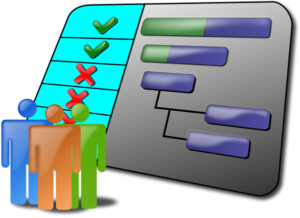 In this article you will better understand the role of the Business Intelligence and Analytics (BIA) sponsor and you will be ready with a five step approach to recruiting a person to fill that role. The role of the sponsor is critical to the success of the BIA project or initiative. This individual is a senior management person who takes overall responsibility for the effort.
In this article you will better understand the role of the Business Intelligence and Analytics (BIA) sponsor and you will be ready with a five step approach to recruiting a person to fill that role. The role of the sponsor is critical to the success of the BIA project or initiative. This individual is a senior management person who takes overall responsibility for the effort.
Seek out a BIA sponsor who has a large stake in the project outcome as well as authority over the resources needed for the project. Look for someone with enough authority throughout the organization to manage competing priorities. It will help if there is organization wide recognition that put business intelligence and analytics as high priority and worthy of sponsorship.
The BIA sponsor fills a number of roles including:
- Definer of the BIA vision
- Owner of the business case
- Harvester of benefits
- Overseer of the project and chair of the BIA steering committee
- Ambassador of the BIA effort to upper management.
BIA champions complement the work of the project sponsor. Look for people who will promote data warehousing efforts across the organization. They make sure that the project is aligned with enterprise goals and help sell the project to the rest of the organization.
The scope of a BIA effort is also highly dependent on the level of authority of the project sponsor. If the sponsor is the CEO or CFO, then the scope can be enterprise wide. If the sponsor is a business unit head, then the scope is likely the business unit. If the sponsor is a department head, then the scope is likely limited to a single department.
Conversely, an Enterprise BIA or Data Warehouse project requires a higher level executive sponsor with more authority and resources than is required for a Departmental Data Mart project.
Five Steps to Recruiting the BIA Project Sponsor
Recruiting the BIA project sponsor is too important to leave to chance. Follow this step by step approach to recruiting your BIA project sponsor and champions:
1. Define the Requirements
- Start by identifying the characteristics that are needed in the BIA sponsor. Consider the scope of the project. What you need the sponsor to do? Who needs to be influenced? What needs to be signed off> What personality type needed? Do you need to motivate an enterprise wide team or a departmental unit? Put the requirements and their weighted priority in a spreadsheet.
2. Identifiy the Best Candidates
- Build a list of candidates for the role and narrow it down to a short list based on the identified requirements. This means scoring each of the candidates based on the prioritized requirements. Remove any candidate from the list who score poorly on the most critical requirements.
3. Analyze Candiate Capacity
- Perform an analysis of the short listed candidates to make sure that they have the time available to support the BIA effort. It is critical that the selected person on the list is devote enough time to your project and not be a sponsor in name only.
4. Plan your Marketing Approach
- Problem identification
- Proposed solution
- Value proposition
- Competition reference – what competitors are doing
- Team identification
- Resource needs
- Selling the BIA effort to the BIA sponsor and other critical stakeholders requires building a short “elevator pitch” which summarizes the benefits of the BIA program in 10 to 20 seconds. You will use the elevator pitch to gain initial interest so that you can provide greater detail and “close the sale”. Components of the elevator pitch may include:
The BIA sponsor is more likely to respond to a value proposition that addresses organization pain points and strategies rather than technical features. Put in business benefit terms and then package that into the “elevator speech”.
|
Technical Feature |
Business Results |
|
Integrated customer data |
Effective use of marketing dollars Improved customer experience |
|
Dashboards |
Visibility of enterprise performance |
|
Data warehouse cubes |
Fast Results |
|
Advanced hardware platform |
Capacity to enable business growth |
|
Cloud BI |
Faster time to market and lower cost of ownership |
5. Present the Pitch
- The presentation of the elevator speech to the candidate sponsor definitely should be done in person. First, rehearse – be ready for a smooth presentation followed by questions from the prospective sponsor. Second, if you do not have a direct connection with the sponsor, find a connection with a mutual contact who can introduce you to the sponsor. This is better than trying to corner by the water cooler or literally by the elevator. You should ask the sponsor to meet for an executive briefing rather than immediately asking the sponsor to be a sponsor.
- The executive briefing will enable you to better understand the candidate sponsor and build toward the close when the candidate sponsor is asked to commit to the BIA program.
Partnering with the BIA Sponsor
You have gained a better understanding of the BIA sponsor role and you cam use the five step approach to recruiting a person to fill that role. Recruting the BIA sponsor is just the beginning. Now it is time to work with the BIA sponsor to launch and implement the BIA effort. Be sure to keep him or her in the loop:
- Provide regular status reports
- Request help in dealing with roadblocks, especially those requiring cooperating across the organization
- Align BIA effort with organization goals